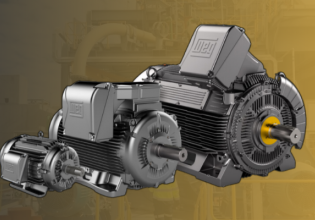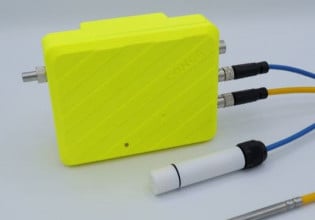Incorporating Artificial Intelligence Into Your Maintenance Program
Understand the practical steps you might take to integrate artificial intelligence with your maintenance program and access the benefits of PdM.
If you haven't read an article lately that touts the benefits that predictive maintenance (PdM) will bring to your business, you haven't spent much time online. While it's true that predictive maintenance offers efficiency and effectiveness benefits in each of those articles, most people come away with a feeling of "and now what?" What is the next step to turning a good idea into a reality for your own operation?
It's worth looking behind the scenes to understand the practical steps you might take to integrate artificial intelligence with your maintenance program and access the benefits of PdM.
A Modular Approach to Predictive Maintenance
Implementing PdM requires a basic understanding of the various technologies involved, with most PdM solutions formed by integrating discrete and usually disparate modules. Three core technologies power most PdM programs, with real-time utility and system scalability accessed by adding two additional but optional modules.

(Source: Limble CMMS)
Core PdM Technologies
Most of the PdM solutions you'll find utilize a cloud-based Computerized Maintenance Management System (CMMS) supported by a dedicated artificial intelligence or predictive analytics engine. Each of these technologies has a distinct part to play.
Computerized Maintenance Management System (CMMS)
A modern CMMS is essential for any maintenance program but is particularly core to implementing predictive maintenance. While some CMMS does not come packaged with an analytics engine, their architecture is usually modular by nature, supporting integrations.
Clients who buy a CMMS usually receive core offerings such as data capture, historical data storage, maintenance planning, and scheduling. Additional, often optional modules for selection usually include inventory management, resource scheduling, vendor management, and predictive maintenance support.
In addition, most CMMS will have an open API, or a publicly available application programming interface, to allow developers to interface their particular software with the CMMS. This utility will enable clients with existing CMMS to select a preferred predictive analytics provider.

(Source: Limble CMMS)
Cloud Computing
The advent of cloud computing two decades ago was pivotal for accelerating the take-up of artificial intelligence and machine learning. When used for PdM, artificial intelligence requires immense amounts of data and serious computing power and speed. Previously, businesses would have needed considerable investment in a computing infrastructure to implement the technology in the workplace.
Today, cloud computing manages data handling and power requirements while offering more robust security than could be managed in-house. Using a fractional leasing model, clients gain access to all that storage and capability on a pay-as-you-go basis. The reduced cost, increased flexibility, and unlimited scalability offered by the cloud have placed data and processor-heavy technologies like PdM within reach of most businesses.
Analytics Engine
Analytics engines use artificial intelligence, deep learning, and machine algorithms to find patterns in data and make predictions about future events. A predictive maintenance analytics engine gathers historical or real-time equipment data, sorts and organizes it into a relevant form, and runs the cleaned data through computer models before generating a maintenance prediction or recommendation.
Optional Technologies
These technologies add some cost, but they also turbocharge your PdM strategy, increasing security, potentially reducing bandwidth costs, and giving early notice of impending issues.
Real-Time Sensor Feeds
While data input into an analytics engine need not be in real-time, PdM's true power and scalability become apparent when it is. Sensor technology has advanced rapidly, with miniature and rugged devices with Wi-Fi capability available for most common monitoring applications. The value in continuously streaming data in real-time allows the timely detection of equipment performance abnormalities.
Edge Computing
Direct streaming data to the cloud was the default position for early PdM applications. Yet, the security implications for multiple data streams and bandwidth costs for remote business locations have required new approaches.
Edge computing brings initial computation and storage closer to the data sources, reducing latency and allowing data aggregation and uploading to the analytics engine once bandwidth allows. An added benefit from the aggregation is reduced attack surfaces and higher data security.
What Operating System Do I Require?
These days, it is unlikely you will find a serious CMMS that does not support all common operating systems for both desktop and mobile devices. Similarly, the software will support major browsers such as Chrome, Microsoft Edge, Safari, and Firefox.
It is worth ensuring that your operating system and browsers are updated to recent versions to ensure maximum security and performance. Regarding hardware, the benefit of carrying out all heavy computations in the cloud ensures your hardware and devices do not require high-end specifications.

(Source: Freepik)
Data Requirements
PdM applies statistical methods to historical data to learn patterns and outcomes that inform the predictive algorithms once operational data is received. There are three characteristics required of the training data:
- It must be relevant to the real operating state of the assets you wish to monitor
- The quantity must be sufficient to allow accurate predictive models to be formed
- The supplied data must have the required quality, i.e., it must have been cleaned and sorted
What this means is that while data is necessary for PdM, it must be of the right quality and quantity to be useful for any meaningful pattern recognition.
Real-World Application
PdM is not a maintenance program in its own right but an asset strategy that forms part of a larger program. In a balanced maintenance program, you can expect individual assets to be operating under maintenance strategies applicable to each asset's criticality, capital cost, and failure rates.
Some assets will be run-to-failure, others will receive preventative or condition-based maintenance, and a small number will be on a predictive program. Normally, the decision to implement predictive maintenance on a particular asset will be guided by the outcome of a failure mode and criticality effects analysis (FMECA).
Next, you must decide on either a turn-key solution, where the CMMS provider sources and integrates all the core and optional technologies for you, or a modular approach. In a modular approach, you may have an existing CMMS to which you wish to add predictive analytics or preferred technology providers that you, or your agent, will integrate.
An example of a turn-key solution is the cloud-based Limble CMMS, which offers modular IoT sensor support for plug-and-play setup to allow PdM raw data capture. Limble partners with global industrial software giant AVEVA, which receives and analyzes the PdM data. The predictive analytics solution is returned to the CMMS, which automatically generates work orders or corrective maintenance tasks for action by maintenance technicians.
Conclusion
While there is considerable hype surrounding predictive maintenance, it is a genuinely useful maintenance strategy. Implementing PdM into a business, whether on new equipment or legacy assets, is not without challenge and complexity. However, the potential reduction in maintenance costs can be as high as 30%, accompanied by improved equipment uptime.
Still, it does require a basic understanding of how it all fits together and some choices on your preferred implementation model. These choices will be contextual and depend on your existing technologies, business size, and technological sophistication.






